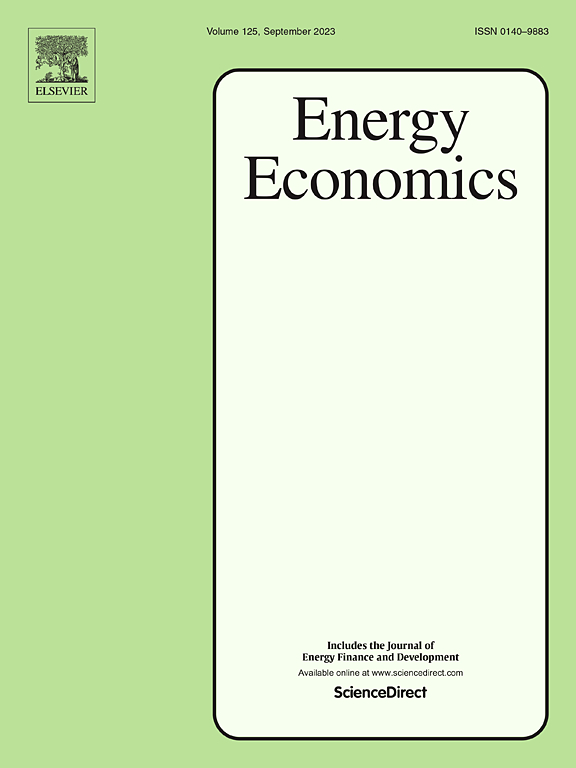用于预测汽油价格趋势的人工智能驱动超图神经网络
IF 14.2
2区 经济学
Q1 ECONOMICS
引用次数: 0
摘要
准确的汽油价格趋势预测对政策制定、风险管理和维护国际贸易平衡至关重要。尽管取得了进步,但现有的人工智能(AI)深度学习模型往往无法完全解决汽油价格波动背后复杂的多因素相互作用,而且缺乏可解释性。本研究引入一种具有时间注意嵌入的超图神经网络(TADHGCN)模型来检测这些高阶相互作用,并有效地提取时间相关信息。我们还整合了SHAP (SHapley加性解释)的可解释性,以探索各种因素如何影响汽油价格预测。我们使用来自美国的汽油价格数据验证了所提出的模型。1995年1月至2011年2月,担任能源信息管理局(Energy Information Administration)的董事。实证结果表明,该模型的精度比现有基准模型提高了6.35%,并通过烧蚀研究验证了模型的稳健性。汽油销量和成品油库存被确定为价格变动的关键驱动因素,其中销量具有积极影响,而库存则具有负面影响。具有时间序列关注和SHAP分析的TADHGCN模型提供了准确的价格趋势预测,并对影响因素提供了有价值的见解。本研究为更准确地预测汽油价格波动提供了理论和实践指导。本文章由计算机程序翻译,如有差异,请以英文原文为准。
AI-driven hypergraph neural network for predicting gasoline price trends
Accurate gasoline price trend forecasting is crucial for policymaking, risk management, and maintaining international trade balances. Despite advances, existing artificial intelligence (AI) deep learning models often fail to fully address the complex multifactor interactions behind gasoline price fluctuation and lack interpretability. This study introduces a hypergraph neural network (TADHGCN) model with temporal attention embedding to examine these higher-order interactions and extract time-dependent information effectively. We also integrate SHAP (SHapley Additive exPlanations) for interpretability to enable the exploration of how various factors influence gasoline price predictions. We validate the proposed model using gasoline price data from the United States. Energy Information Administration, from January 1995 to February 2011. Empirical results demonstrate that the proposed model improves accuracy by 6.35% compared with the state-of-the-art benchmark, and the model’s robustness is verified by ablation study. Gasoline sales volume and finished gasoline inventories are identified as key drivers of price movement wherein sales volume has a positive impact, while inventories exert a negative effect. The TADHGCN model with time-series attention and SHAP analysis provide accurate price trend forecasts and offer valuable insights into the contributing factors. This study provides both theoretical and practical guidance for anticipating gasoline price fluctuations more accurately.
求助全文
通过发布文献求助,成功后即可免费获取论文全文。
去求助
来源期刊

Energy Economics
ECONOMICS-
CiteScore
18.60
自引率
12.50%
发文量
524
期刊介绍:
Energy Economics is a field journal that focuses on energy economics and energy finance. It covers various themes including the exploitation, conversion, and use of energy, markets for energy commodities and derivatives, regulation and taxation, forecasting, environment and climate, international trade, development, and monetary policy. The journal welcomes contributions that utilize diverse methods such as experiments, surveys, econometrics, decomposition, simulation models, equilibrium models, optimization models, and analytical models. It publishes a combination of papers employing different methods to explore a wide range of topics. The journal's replication policy encourages the submission of replication studies, wherein researchers reproduce and extend the key results of original studies while explaining any differences. Energy Economics is indexed and abstracted in several databases including Environmental Abstracts, Fuel and Energy Abstracts, Social Sciences Citation Index, GEOBASE, Social & Behavioral Sciences, Journal of Economic Literature, INSPEC, and more.
 求助内容:
求助内容: 应助结果提醒方式:
应助结果提醒方式:


